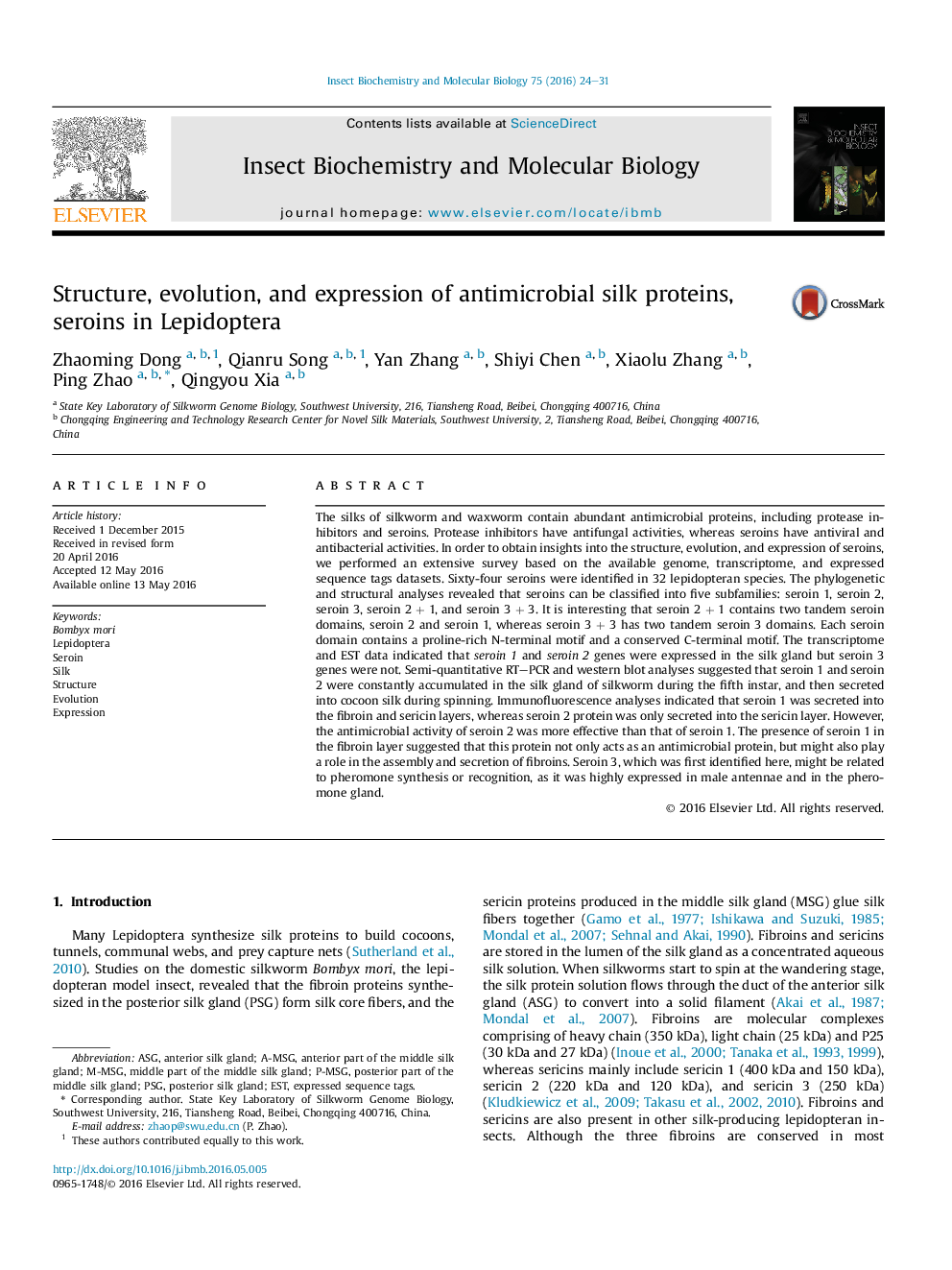| کد مقاله | کد نشریه | سال انتشار | مقاله انگلیسی | نسخه تمام متن |
|---|---|---|---|---|
| 1981933 | 1539477 | 2016 | 8 صفحه PDF | دانلود رایگان |

• Sixty-four seroins were identified in 32 lepidopteran species.
• Five seroin subfamilies were identified, including seroin1, seroin2, seroin 3, seroin 2 + 1, and seroin 3 + 3.
• Seroin 1 and seroin 2 were expressed in the silk gland but seroin 3 was not.
• Seroin 1 was secreted into the fibroin and sericin layers, whereas seroin 2 was secreted into the sericin layer.
The silks of silkworm and waxworm contain abundant antimicrobial proteins, including protease inhibitors and seroins. Protease inhibitors have antifungal activities, whereas seroins have antiviral and antibacterial activities. In order to obtain insights into the structure, evolution, and expression of seroins, we performed an extensive survey based on the available genome, transcriptome, and expressed sequence tags datasets. Sixty-four seroins were identified in 32 lepidopteran species. The phylogenetic and structural analyses revealed that seroins can be classified into five subfamilies: seroin 1, seroin 2, seroin 3, seroin 2 + 1, and seroin 3 + 3. It is interesting that seroin 2 + 1 contains two tandem seroin domains, seroin 2 and seroin 1, whereas seroin 3 + 3 has two tandem seroin 3 domains. Each seroin domain contains a proline-rich N-terminal motif and a conserved C-terminal motif. The transcriptome and EST data indicated that seroin 1 and seroin 2 genes were expressed in the silk gland but seroin 3 genes were not. Semi-quantitative RT–PCR and western blot analyses suggested that seroin 1 and seroin 2 were constantly accumulated in the silk gland of silkworm during the fifth instar, and then secreted into cocoon silk during spinning. Immunofluorescence analyses indicated that seroin 1 was secreted into the fibroin and sericin layers, whereas seroin 2 protein was only secreted into the sericin layer. However, the antimicrobial activity of seroin 2 was more effective than that of seroin 1. The presence of seroin 1 in the fibroin layer suggested that this protein not only acts as an antimicrobial protein, but might also play a role in the assembly and secretion of fibroins. Seroin 3, which was first identified here, might be related to pheromone synthesis or recognition, as it was highly expressed in male antennae and in the pheromone gland.
Figure optionsDownload high-quality image (336 K)Download as PowerPoint slide
Journal: Insect Biochemistry and Molecular Biology - Volume 75, August 2016, Pages 24–31